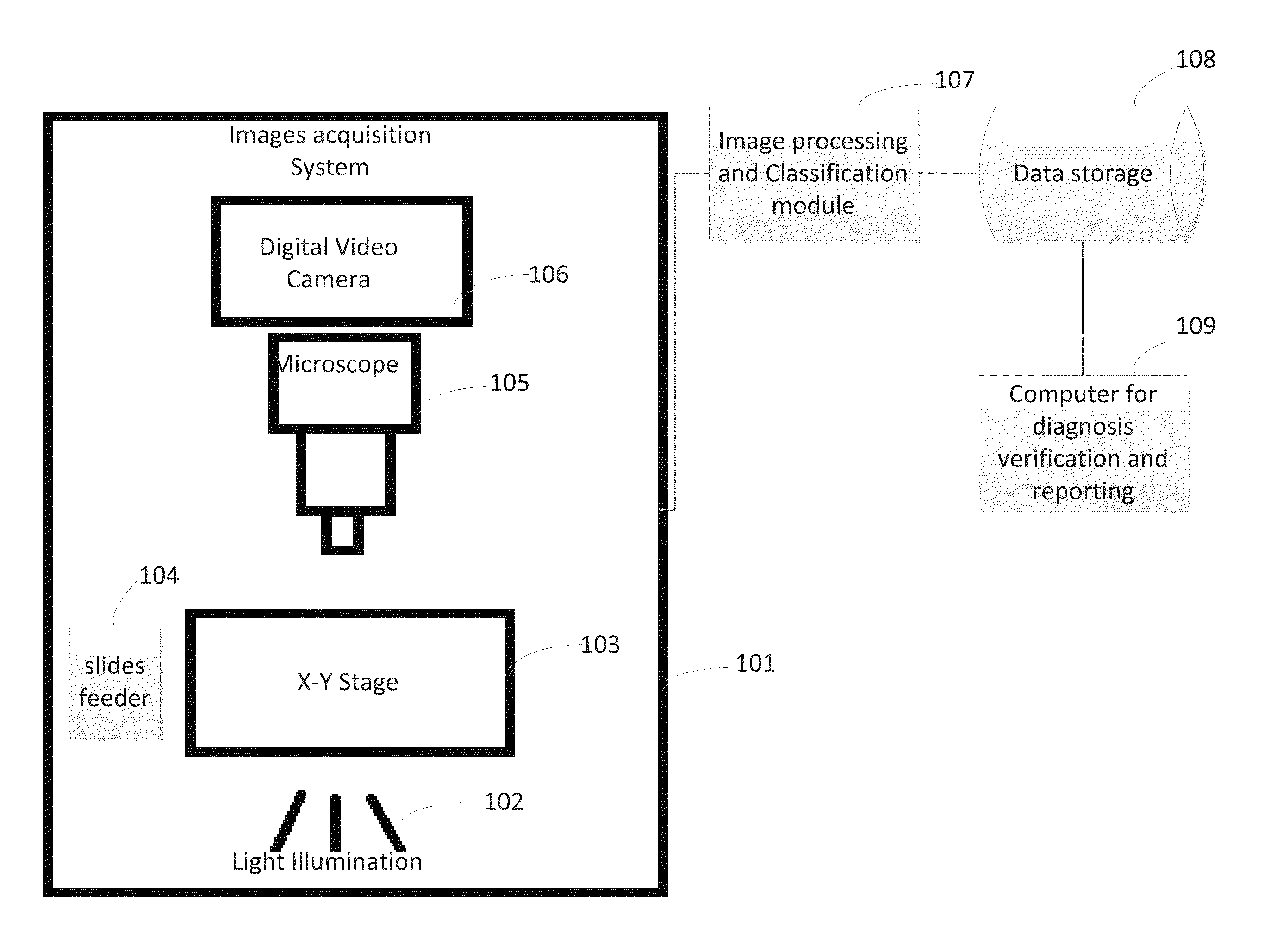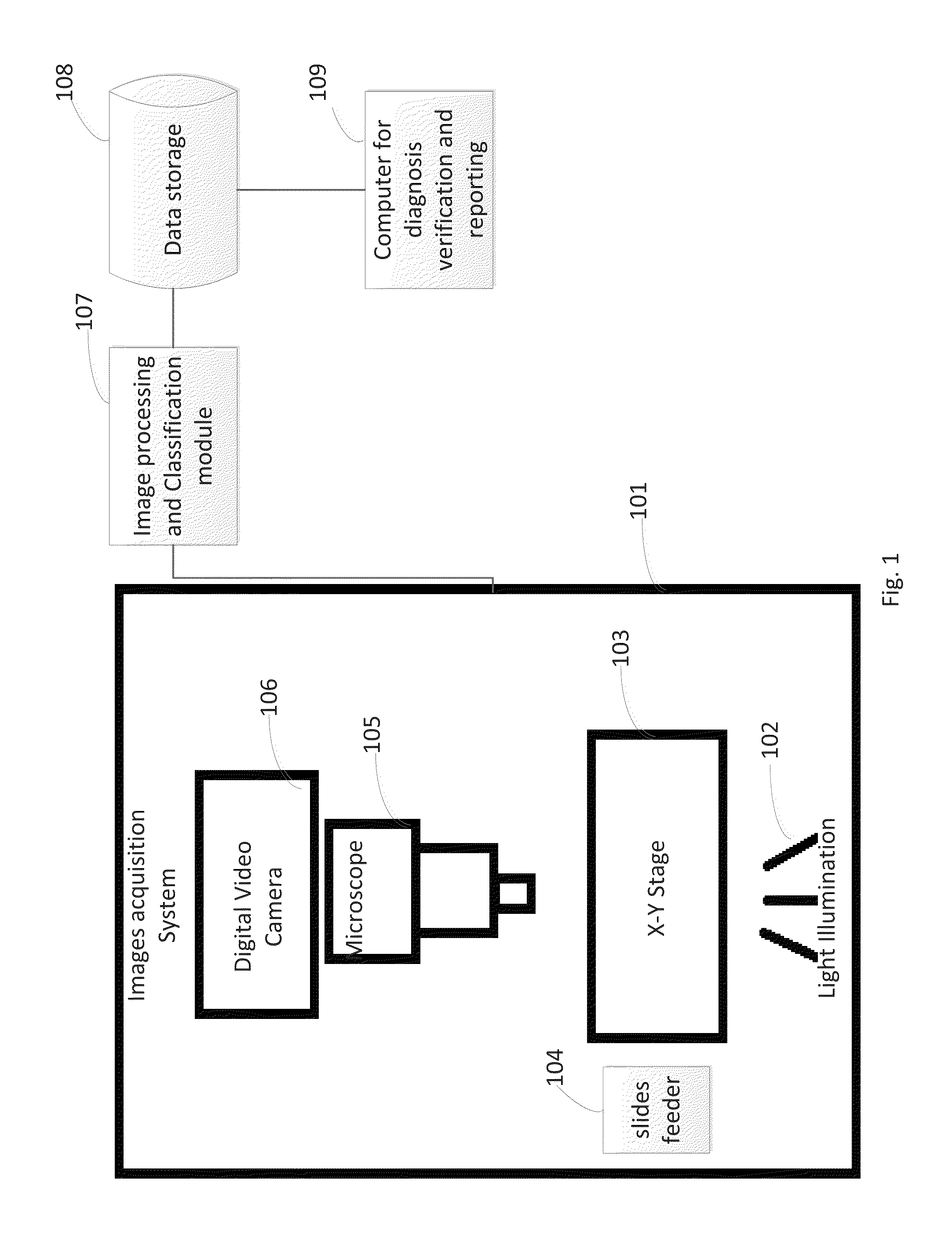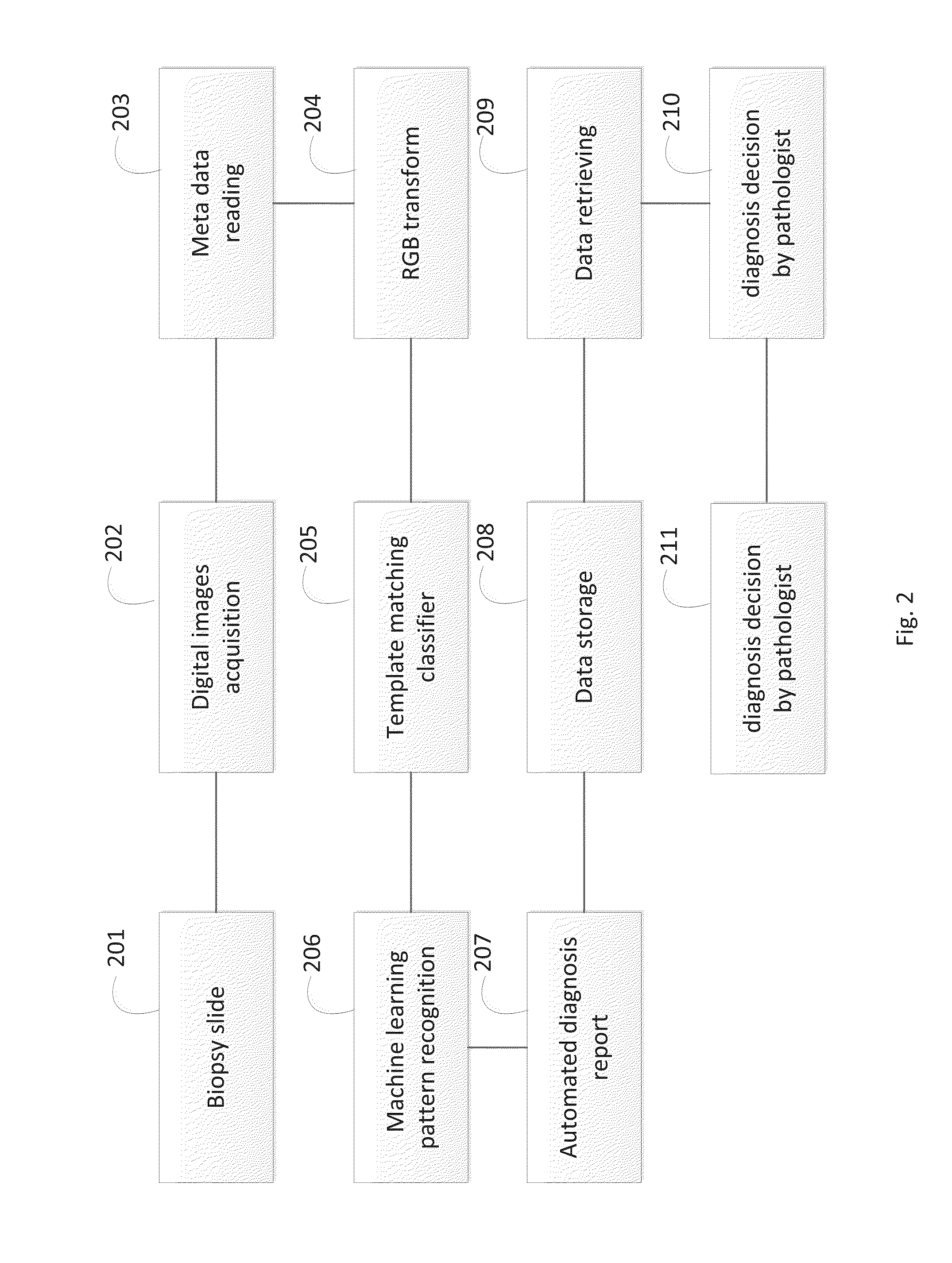Automated histological diagnosis of bacterial infection using image analysis
an image analysis and histological analysis technology, applied in the field of image processing, can solve the problems of difficult to extract cell regions and bacteria from histological slides, high false negative rate, and exhausting procedure, and achieve the effect of improving performan
- Summary
- Abstract
- Description
- Claims
- Application Information
AI Technical Summary
Benefits of technology
Problems solved by technology
Method used
Image
Examples
Embodiment Construction
[0031]In the following detailed description, numerous specific details are set forth in order to provide a thorough understanding of the invention. However, it will be understood by those skilled in the art that the present invention may be practiced without these specific details. In other instances, well-known methods, procedures, and components have not been described in detail so as not to obscure the present invention.
[0032]FIG. 1 illustrates a schematic representation of an automated screening apparatus and system according to an embodiment of the invention. Image acquisition system 101 includes visible light illumination 102, X-Y automated stage 103 equipped with a motor controller for stage movement, slide feeder 104, microscope 105, and a color RGB CCD or CMOS camera 106 to acquire digital images. The images obtained from image acquisition system 101 are transferred to image processing module 107 for automated classification decision. Slide data is sent to the data storage ...
PUM
 Login to View More
Login to View More Abstract
Description
Claims
Application Information
 Login to View More
Login to View More - R&D
- Intellectual Property
- Life Sciences
- Materials
- Tech Scout
- Unparalleled Data Quality
- Higher Quality Content
- 60% Fewer Hallucinations
Browse by: Latest US Patents, China's latest patents, Technical Efficacy Thesaurus, Application Domain, Technology Topic, Popular Technical Reports.
© 2025 PatSnap. All rights reserved.Legal|Privacy policy|Modern Slavery Act Transparency Statement|Sitemap|About US| Contact US: help@patsnap.com



